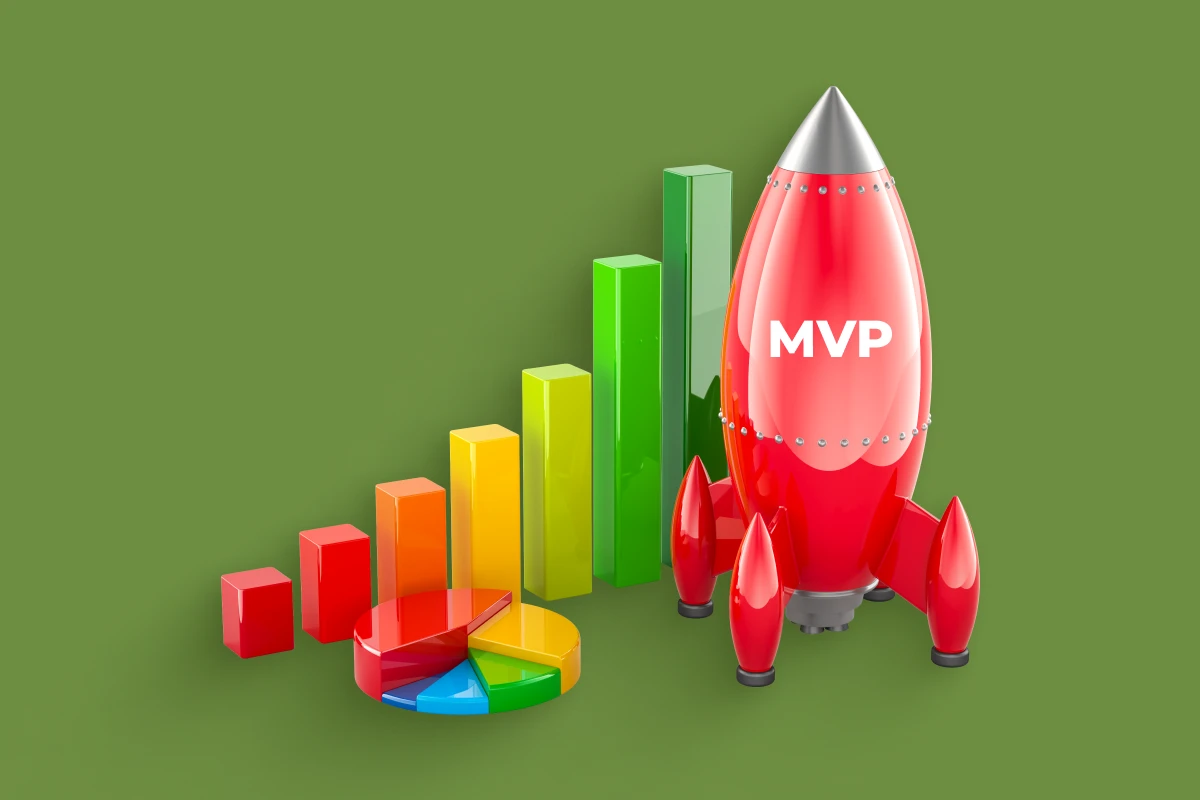Recommendation engines already proved its efficiency in various industries for many well-known companies like Google, Facebook, Netflix, eBay, Amazon, and Spotify. These online recommendation engines leverage machine learning and analyze user behavior to deliver personalized experiences. There are a lot of different benefits recommendation engine service can provide for all types of businesses no matter what size the company is.
Today we will answer one of the most commonly asked questions related to building a recommendation system development: "How much does it cost to build a custom recommendation engine?"
We had already built several recommendation systems for small and medium companies and participated in several tenders and technological researches in this area. So today we will share our expertise in this topic pointing on main development phases that affect final costs when you're looking at how to build a recommendation system.
Below we are going to cover the complete development roadmap and provide the fair estimation for every stage. Let's start.
Recommender Development Roadmap: Understanding the Process
First of all, the recommendation system development cost depends on many factors. For example data complexity, the volume of user data, business goals, user item interactions, and the types of recommender systems needed. The development process of how to build a recommender system is usually split into several phases.
Having a general understanding of the project phases helps us to make a rough estimation of the ai recommendation engine cost. We should note that application roadmap is quite useful during the development of a complex system. Moreover it leads to better project understanding both for the customer and for the development team, especially when working with recommendation engine developers.
At Azati we mainly specialized in recommendation engine software that are based on machine learning and artificial intelligence, utilizing advanced algorithms for recommendation systems like collaborative filtering and matrix factorization. But we also developed the recommenders that use the traditional methods and algorithms as well.
For now, we will describe and estimate the development process of the recommendation system machine learning powered solution. By the way, it is similar to the AI development estimation.
Phase 1: Discovery & Analysis Phase
Cost: Free
Before the project starts, it is essential to set up business and project objectives when building a recommendation system. The primary goal of this phase is to conduct a feasibility study and analyze user preferences patterns.
The work on every project starts with the analysis. We analyze current metrics, data assets, user data quality, and customer goals and processes. During that stage, the team defines the growth points, determines the technological stack (including whether to use python recommender frameworks or recommendation algorithm python libraries), timeline and budget, and develops all corresponding documentation.
At the end of this phase, our business analysts find out whether we should use machine learning techniques like collaborative filtering or the traditional algorithms to reach customer goals and help with users discovering relevant content. Finally, we determine the scope of work needed for the prototype or MVP development.
Key Deliverables:
- Technical feasibility study;
- User behavior analysis;
- Algorithm for recommendation systems selection;
- Project timeline and budget estimation.
After all the requirements are gathered, problems and goals are analyzed, the user data is digitized, we proceed to the second stage. By the way, the first project phase we do absolutely for free.
We should also note that often our clients request the raw estimation, so we provide the data according to our expertise and completed projects for other clients. Often such estimates are slightly inaccurate because we cannot calculate the risks accurately, what makes the raw assessment more expensive.
Phase 2: Prototype Implementation Phase
Cost: Under $5,000
During the second phase, we develop the simple prototype of the recommendation system according to the data gathered during the previous step to prove the hypothesis and show its efficiency. That phase is critical to calculate the final costs of AI-powered recommender development and understand how to build a recommender system that works.
As we already said, the prototype is a business model created to test overall system feasibility and to demonstrate the proof of concept for analyzing user item interactions. It can be a text or drawing-based mock-up, or a more complex code-based prototype (often using python recommender tools), depending on the project complexity. Each prototype is shown and discussed with the client.
Prototyping is a technique which allows us to confirm requirements and design choices when building a recommendation system. Prototypes are usually fast and cheap to build and easy to mend, making them perfect for testing recommendation algorithm python implementations.
Before real development begins, it is mandatory to calculate the risks. As the primary requirements are already discussed in the early stage, we can provide a more accurate estimation for the final solution, taking into consideration the risks, software implementation, algorithm tuning (including matrix factorization optimization), and long or short-term maintenance.
We are striving to make this step as quick and inexpensive as possible when working as your recommendation engine developers. The prototype price may vary depending on many factors, but usually, it is under $5,000 for the recommendation engine.
Phase 3: Minimum Viable Product (MVP) Development
Cost: $10,000 (includes prototype)
From the previous step, it may seem to you that the prototype is the alpha version of the recommendation system, but it is not.
The main difference between prototype and Minimum Viable Product: prototype proves the concept or idea – it is possible to extract insights from the user data, and according to that insights generate suggestions using algorithms for recommendation systems and provide recommendations; MVP is an alpha version of a product, that solves the business goal – to increase the revenue or turnover through better customer experience.
MVP works with the client's real user data and is subjected to a group of real customers as the first version of the solution, collecting the user behavior feedback. It is usually much cheaper to develop a Minimum Viable Product than a complex, robust solution when you're figuring out how to build a recommendation system.
We cannot guarantee that the solution we develop will improve the return on investment (ROI) about 256%, but we can make predictions when we already have data after a small period analyzing user item interactions. MVP is perfectly suitable in this situation: it helps us to collect the first data to make accurate predictions about user preferences.
MVP Features Typically Include:
- Real-time recommendation engine processing;
- Basic collaborative filtering or similar item matching;
- Integration with existing user data sources;
- Initial user behavior tracking;
- Performance metrics dashboard.
Another moment is cost reduction and ROI increase when building a recommendation system. Usually, the company that wants us to develop a recommendation engine software is a young company without strict traditional management, so they are still agile.
Sometimes, when we present the recommendation system machine learning MVP to the customer, we see it solving another business goal. Of course, it is not the goal described in the specification but the most valuable one. Agile software development approach helps us to determine new goals every sprint when working on how to build a recommender system. So we can continue to improve the existing code that already helps the customer while developing another product to solve the original issue.
Usually, the MVP of recommendation engine projects costs vary from $5.000 to $15.000, according to the number of data to process, and factors the algorithm should take into consideration while generating the suggestions.
Phase 4: Recommender Release and Deployment
Cost: Under $5,000
During the last phase, we do improve the prototype of the recommendation engine to match the clients' needs and integrate it with the existing infrastructure as a full recommendation engine service.
The final release can be delayed or even postponed according to many different factors. Often our clients choose agile software development and prefer to launch the online recommendation engine prototype, improving it over time based on user behavior data.
As we already mentioned, prototype deployment is the best idea if you want to prove the hypothesis. But not the best option if you're going to use it as is for an extended period. Sometimes even good-working prototypes lack stability. We usually recommend thinking twice, before prototype deployment.
Deployment Considerations:
- Cloud vs. on-premise hosting for your recommendation system;
- User data privacy and security compliance;
- Integration with existing analytics tools;
- Scalability for growing user item interactions;
- Monitoring user behavior patterns.
Usually, we deploy our solutions to the cloud due to the benefits it provides for recommendation systems machine learning operations. But sometimes it happens that our engineers visit customers on-site to set everything up.
This project phase usually is not expensive, and costs under $5,000 for a standard recommendation engine service. But the final recommendation engine deployment price may vary according to the previous steps and stages.
Understanding Types of Recommender Systems
When you're exploring how to build a recommendation system, it's important to understand the different types of recommender systems available:
- Collaborative Filtering Systems: Use user item interactions and user behavior patterns to find similar item recommendations
- Content-Based Systems: Analyze item attributes to match user preferences and suggest relevant content
- Hybrid Recommendation Systems: Combine multiple approaches using matrix factorization and other algorithms for recommendation systems for optimal results
Popular Tools and Technologies
Online recommendation engines typically are based on these popular frameworks:
- Python Recommender libraries (Surprise, LightFM);
- Recommendation Algorithm Python frameworks (scikit-learn, TensorFlow);
- Apache Mahout for large-scale machine learning;
- Custom collaborative filtering implementations.
Real-World Recommendation Systems Examples
Understanding recommendation systems examples helps contextualize the value:
- Netflix: Uses hybrid recommendation systems analyzing user behavior for video suggestions
- Amazon: Employs collaborative filtering for product recommendations based on user item interactions
- Spotify: Combines user preferences with machine learning for playlist generation
- YouTube: Analyzes user data to suggest relevant content and improve customer experience
Conclusion: Your Investment in Building a Recommendation System
Summarizing our thoughts, the recommendation system development is the process that is not easy to estimate at first sight when considering ai recommendation engine cost. It requires the personalized approach and the deep understanding and analysis of the clients business processes, goals, user data, and user preferences.
Finalizing the development costs:
| Phase | Cost | What You Get |
|---|---|---|
| Analysis and raw estimation | FREE | Feasibility study, technology selection |
| Prototype development | $5,000 | Proof of concept, algorithm testing |
| MVP development (prototype included) | $10,000 | Working system with real user data |
| Deployment and Release | $5,000 | Live online recommendation engine |
For the recommendation engine powered by traditional algorithms, it is about 30% lower. But the system makes less accurate predictions in comparison to the smart recommendation system machine learning solution utilizing collaborative filtering or matrix factorization.
Often the price varies according to several factors: the amount of user data and its complexity, business goals and expectations regarding customer experience, existing code base and technologies-in-use (such as python recommender frameworks or recommendation algorithm python tools). So it can both increase or decrease accordingly to the specific project.
Ready to unlock personalized user experiences and boost engagement with your own recommendation engine? Contact us today for a tailored estimate!





















































































































